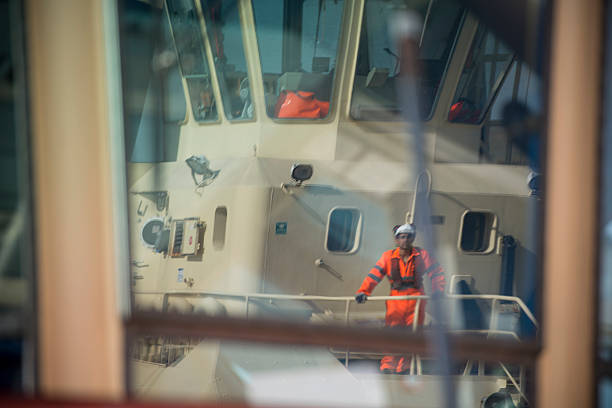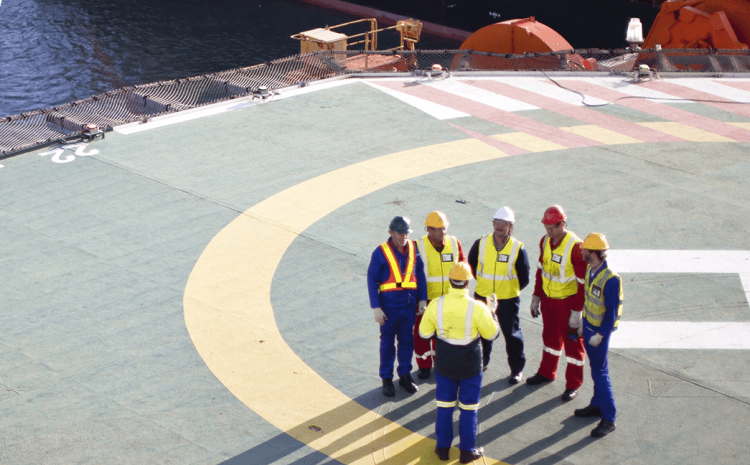Crew management: future patterns

Grahaeme Henderson
Together in Safety Chairman
When I speak with any seafarer and their spouse, any shipping company executive or shipowner, and ask “What is the most important aspect of crew management, today and into the future?” The answer is always the same: “safety”. Whether it is embarking or disembarking the ship, the everyday work activities, or the seafarers’ health and well-being while onboard, the primary objective is always the same: to ensure that everyone arrives home safely to their families without serious injury or worse.
Yet, shipping remains one of the world’s most hazardous industries. While other industries, such as air, rail, nuclear and construction have all made improvements in their safety performance through the years, this is not the case for shipping.
The “Safety & Shipping Review 2022” by Allianz shows there were 3,000 reported shipping casualties or incidents in 2021, which is an increase of more than 10 per cent when compared to 2020. Data on the major incidents that feature in media reports each day also point to an increase in all shipping sectors. P&I insurance premiums continue to increase year on year. From physical risks like collisions and fires, to psychological ones like mental health and social well-being, safety must be the top priority for crew management now and in the coming years.

Crew management and safety: key challenges to address
Mental health at sea is a particular challenge to crew safety. There are many interconnecting causes with risk factors that are inherent to the environment and nature of the work. Loneliness, lack of space, fatigue, irregular sleeping patterns, under-resourcing and multi-tasking, a toxic management culture, inexperience and many more reasons can all cause mental health issues or exacerbate underlying conditions.
While seafaring will always pose challenges to mental health – long periods away from home and separation from loved ones are, unfortunately, here to stay – there is much that can be done to mitigate these risk factors. A good, supportive management structure can go a long way to ensuring seafarers are able to take due care of their mental health. Senior staff can cultivate an atmosphere of tolerant, open discussion to create a work culture that protects mental health, rather than stigmatises it. A clear mental health protection plan, with a well thought through set of measurable objectives and parameters, is an important way to ensure that seafarers are not experiencing undue suffering.
The UK government’s “Suicide and Seafarers” report identified mental health and suicide at sea to be an area that is poorly understood among seafarers and across the industry. Often, relationships at sea are put under additional pressure. Seafarers spend almost a year in close quarters with their colleagues.
There is no escaping the “office” at the end of the day and you cannot choose your friends, as they are selected for you. These relationships are further strained by the vastly differing experience of crew members, who often hail from different socioeconomic backgrounds, cultures and speak different languages. This can cause division, discrimination and isolation among seafarers, as reported by the International Seafarers Welfare and Assistance Network (ISWAN) in 2020. Intolerance on religious, ethnic or classist grounds can be a blight on work culture.
Ensuring seafarers are taught important diversity and inclusion values can help engender a tolerant, inclusive workplace. Although seafaring carries risks that are above and beyond other manual industries, incident rates continue to rise. To make matters worse, there is much under-reporting of incidents – so the actual reality is unknown.
It is also the case that new, comprehensive safety strategies are not easy to implement or to check that they are working in practice and the consequence of this intransigence is a loss of life, livelihood and serious economic harm for owners and businesses.
The majority of incidents are repeat events that could and should have been prevented. The list sounds all too familiar and includes collisions, groundings, containers falling from ships, engine room fires, heavy weather injuries and accidents in mooring operations or personnel transfer.
For a ship to remain as safe as possible, the role of leadership from the very top of the company is crucial. The CEO and the leadership team must make safety their number one priority. They must implement this onboard and ensure that all crew members follow operating procedures. Crew members should be encouraged to report unsafe practices and stop the job, if they are unsure or they encounter unexpected circumstances. Senior management must devise, follow and implement risk assessments and training sessions, to help reduce the risk of preventable personnel accidents.
Any incident at sea can have catastrophic consequences. The life or livelihood of a seafarer and their family will be ruined, while the company stands to suffer. Costs, both direct and indirect, can be enormous. Insurance may cover some of the costs, but the company will incur the cost of delays while investigations take place, loss of revenue, compensation costs, management time and more.
There are also indirect costs, such as negative publicity for the company, reduced employee sentiment and damage to the personal reputation of the owner. Conversely, it has been proven that companies with a great safety performance record also have great business performance.
To stop unnecessary incidents at sea, we must see safety as the solid foundation that supports every activity in the company. It is often said that if you get the safety right, you get everything right. A good safety record leads to a healthy employee culture, positive publicity and a glowing reputation for a company. There is simply no excuse to neglect such a fundamental part of the shipping industry.

Together in Safety
So, with the many challenges, how do we make the necessary changes to put safety as the top agenda item for all involved?
Shipping has many important and influential industry groups, shipowners and managers, as well as related supporting businesses.These groups have made it clear something must be done to unite the shipping industry around safety that does not result in more regulation, but will draw on the collective expertise of the industry.
From these beginnings, the Together in Safety coalition was formed four years ago. It comprises all of the shipping industry groups, including the International Chamber of Shipping, BIMCO, OCIMF, Intertanko, Intercargo, Interferry, Cruise Liners International and the World Shipping Council. It also includes major shipping companies, insurance, classification societies and country representatives.
Links have also been established with the International Air Transport Association and the Rail Standards and Safety Board, so that important safety lessons can be learnt from the air and rail industries.
The Together in Safety coalition’s core objective is to protect seafarers’ lives, while delivering improved business efficiency and commercial effectiveness and is fundamental to safeguarding shipping’s future success. A key building block is the “Framework of Strategic Drivers”. Shipping companies should become familiar with the three key strategic drivers and test for alignment with their existing programme, making adjustments as required.
The first strategic driver is leadership. Visible safety leadership must stem from the top down, with the right behaviours and mindset modelled by the CEO and leadership team. Starting every conversation with safety, visiting people on the front line, reviewing progress and taking corrective action where required is crucial. Together in Safety includes modules and guidelines to help leaders develop a vision and plan, improve engagement and facilitate collaboration. So often when a major incident occurs, the procedures have been found to be in place, but the application is lacking. The framework encourages verification that what you think is happening has actually occurred in practice.
The second part is incident prevention. Together in Safety has undertaken a detailed analysis of major shipping incidents during the past years across all shipping sectors and concluded they are often the same types of incident, such as collisions, groundings, ships on fire, lost containers or people falling overboard. Together in Safety focuses on these 14 categories of major incident types, involving casualties or high-cost insurance claims. For each incident type, a set of “Golden Safety Rules” have been outlined, including guidelines and best practices, training and engagement tools and checklists of areas that have highlighted major issues.
The third area is well-being and care. The Together in Safety initiative includes recommendations to deliver a high-quality wellbeing and care programme and improve seafarer mental health. This is key to developing a healthy, happy and high-performing team. There are guidelines to help promote and integrate mental health and well-being policies, tools and techniques into an organisation, as well as on how to protect, promote and respond.
The coalition is focused on collaboratively addressing the current challenges of the entire industry, using its combined collective knowledge and expertise for the benefit of all.
Together in Safety is making strong progress with an industry-leading programme for every shipping company and will be using a straightforward web-based interactive process for implementation.
With safety incidents increasing in number, there is an opportunity for every shipping company to reverse the trend by being a part of the global movement to improve the safety performance and adopting the Together in Safety programme. We owe this to the crew members who work for us, as they entrust their safety to us and we need to look after them as if they were one of our family.
Working together, we will be stronger and together we can make a difference.
Originally published in Crew April 2023

